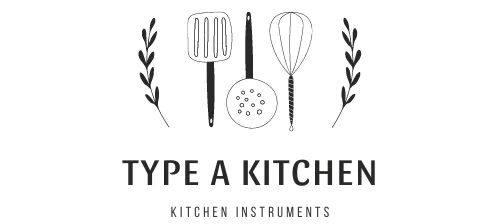Introduction
Cast-iron skillets are one of the best cookware items you can have in your kitchen. They are tough, durable, and versatile enough to handle a wide range of cooking tasks. However, even the best cast-iron skillet will eventually start showing signs of wear and tear after years of use. One common issue that many people face is having a heavily burned cast-iron skillet that seems impossible to clean.
Fortunately, there are several effective ways to restore your cast-iron skillet and make it look as good as new. From using simple household ingredients like baking soda and vinegar to investing in specialized cleaning products, there are many options available depending on how severe the burn marks are on your skillet. Some methods may require more time or effort than others, but with some persistence and patience, you can successfully clean and restore your beloved cast-iron skillet.
10 ways How to get rid of burnt-on food on cast iron cookware
Baking Soda and Water
To use baking soda for cleaning your cast-iron skillet, start by filling the pan with hot water and adding a few tablespoons of baking soda. Let it sit for about 10-15 minutes to allow the mixture to work its magic. Then scrub the surface gently with a sponge or brush until all the burnt food particles are removed. Once you’ve cleaned off all the grime, rinse the skillet thoroughly with hot water and dry it completely before seasoning it again with oil.
Salt and Water
To start, sprinkle coarse salt generously on the surface of the skillet. Next, pour a small amount of water onto the surface, just enough to create a paste with the salt. Using a scrub brush or sponge, gently scrub the mixture over all areas of the skillet until all burnt particles are removed. Rinse thoroughly with hot water and dry immediately with a towel or heat on low over a stove until completely dry.
Vinegar and Water
To use vinegar for cleaning, start by filling your sink with warm water and adding a cup of white vinegar. Soak your skillet in the solution for at least an hour or overnight if necessary. After soaking, scrub away any remaining debris with a non-abrasive sponge or brush. For more stubborn stains, add some coarse salt to the mix to create an abrasive paste that can help lift off burnt-on food particles. Once you have thoroughly cleaned your skillet, rinse it well with hot water and dry it completely with a towel or on low heat over the stove.
Boiling Water and Salt
To start, fill your cast-iron skillet with enough water to cover the burnt areas and add a generous amount of salt. Bring the mixture to a boil over medium heat, then reduce the heat and let it simmer for about 10-15 minutes. After that, turn off the heat and let the skillet cool down completely before draining out the water. Once cooled down, use a scrub brush or steel wool pad to gently scrub off any remaining burnt bits or rust spots. Rinse with warm water and dry thoroughly with paper towels or a clean cloth.
Lemon Juice and Baking Soda
To use lemon juice and baking soda to clean your cast-iron skillet, start by sprinkling a generous amount of baking soda onto the surface of your skillet. Next, cut a lemon in half and squeeze the juice over the baking soda until it forms a thick paste. Use a stiff-bristled brush or sponge to scrub the paste into any burned areas on your skillet until they are completely clean. Once you’ve finished scrubbing with lemon juice and baking soda, rinse your skillet thoroughly with hot water and dry it completely using paper towels or a clean cloth.
Potatoes
Potatoes are a surprising solution for cleaning and restoring heavily burned cast-iron skillets. Simply chop a raw potato into small pieces, add a tablespoon of salt or baking soda, and use the mixture to scrub away any burnt-on food or residue.
Not only does this method effectively clean your skillet, but it also helps to re-season the surface without stripping away the natural non-stick coating that develops over time with regular use.
Dryer Sheet
Using a dryer sheet to clean your cast-iron skillet might sound strange, but it’s surprisingly effective. Simply wet the skillet with warm water and then rub it down with a used dryer sheet. The fibers in the sheet act as gentle abrasives, removing any stuck-on food particles without scratching the surface of the pan. You’ll be amazed at how easily even heavily burned-on messes come off!
Soap and Water
Soap and water are the most basic yet effective ways of cleaning a heavily burned cast-iron skillet. Before using soap, make sure to wipe the skillet with paper towels or a clean cloth to remove any food debris. Then, fill the sink with hot water and add a few drops of dish soap. Using a non-abrasive sponge or brush, scrub the skillet in circular motions until all burnt residue has been removed. Make sure to thoroughly rinse it with hot water and dry it completely with a clean towel.
Steel Wool
When using steel wool to clean your skillet, be sure to use it in conjunction with a gentle cleanser or oil. Never use abrasive cleaners like bleach or ammonia with steel wool, as they can damage both the skillet’s surface and the wire mesh of the steel wool itself. Additionally, always wear gloves when handling steel wool as it can cause cuts and abrasions.
Commercial Cast Iron Cleaner.
These cleaners come in different forms such as sprays, powders, and pastes that make it easy to apply on the surface of your skillet. To use a commercial cast iron cleaner, simply apply a small amount onto the surface of your skillet using a soft sponge or brush. Rub gently in circular motions for about 30 seconds before rinsing off with warm water. You can repeat this process until you achieve desired results. With regular use, you can keep your cast-iron skillet looking new and shiny for years!
Conclusion:
In conclusion, cleaning and restoring a heavily burned cast-iron skillet may seem like an impossible task, but it is definitely doable. The ten ways discussed in this article are proven and tested methods that you can follow to restore your burnt pan back to its original state.
Always clean them immediately after use and avoid using harsh chemicals and abrasive cleaners that can damage the surface of your skillet. With proper maintenance, you can extend the lifespan of your pan considerably. Lastly, owning a well-seasoned cast-iron skillet is an investment worth making. It’s versatile, long-lasting, and adds unique flavors to your meals.


